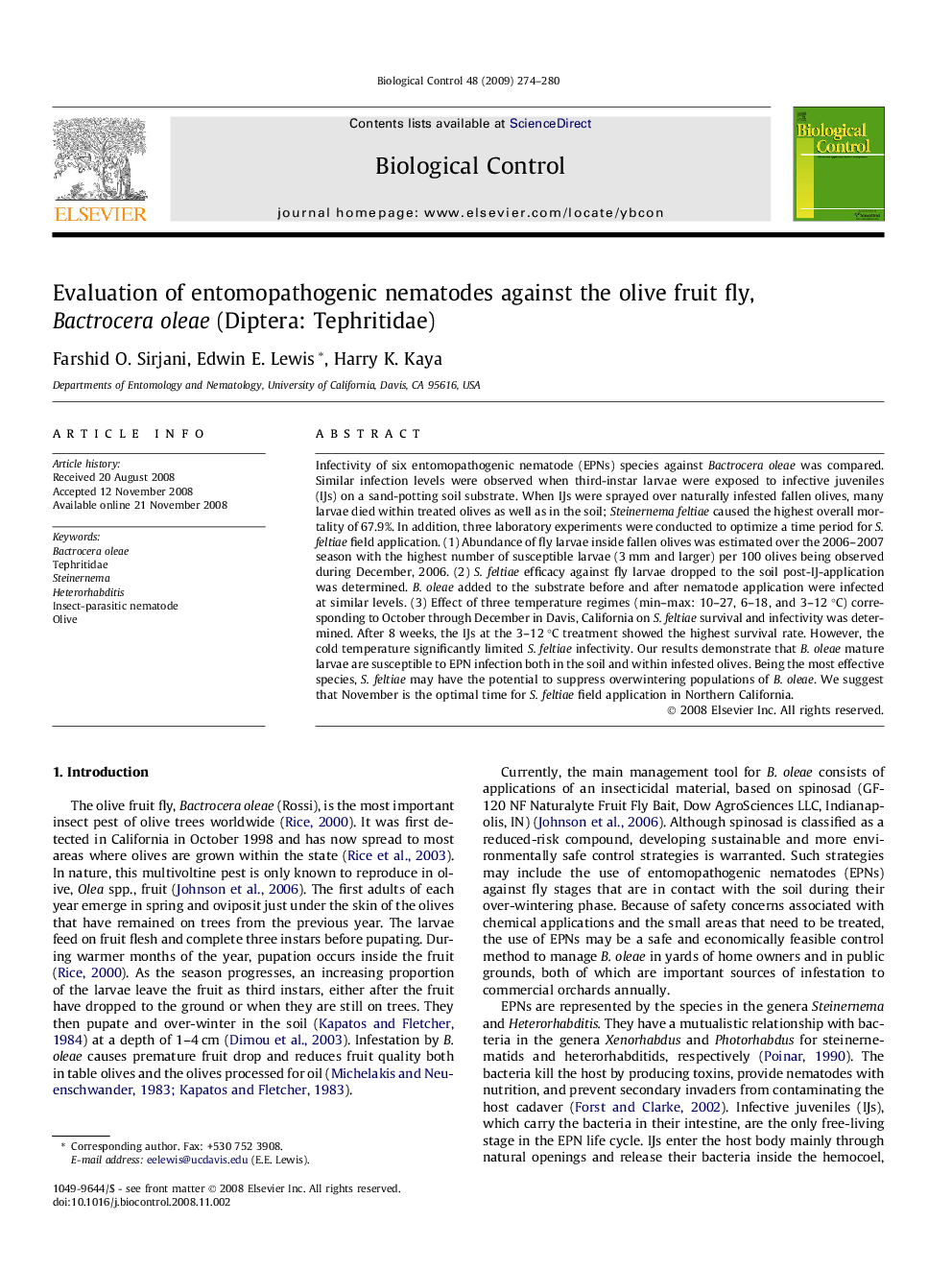| Article ID | Journal | Published Year | Pages | File Type |
|---|---|---|---|---|
| 4504751 | Biological Control | 2009 | 7 Pages |
Infectivity of six entomopathogenic nematode (EPNs) species against Bactrocera oleae was compared. Similar infection levels were observed when third-instar larvae were exposed to infective juveniles (IJs) on a sand-potting soil substrate. When IJs were sprayed over naturally infested fallen olives, many larvae died within treated olives as well as in the soil; Steinernema feltiae caused the highest overall mortality of 67.9%. In addition, three laboratory experiments were conducted to optimize a time period for S. feltiae field application. (1) Abundance of fly larvae inside fallen olives was estimated over the 2006–2007 season with the highest number of susceptible larvae (3 mm and larger) per 100 olives being observed during December, 2006. (2) S. feltiae efficacy against fly larvae dropped to the soil post-IJ-application was determined. B. oleae added to the substrate before and after nematode application were infected at similar levels. (3) Effect of three temperature regimes (min–max: 10–27, 6–18, and 3–12 °C) corresponding to October through December in Davis, California on S. feltiae survival and infectivity was determined. After 8 weeks, the IJs at the 3–12 °C treatment showed the highest survival rate. However, the cold temperature significantly limited S. feltiae infectivity. Our results demonstrate that B. oleae mature larvae are susceptible to EPN infection both in the soil and within infested olives. Being the most effective species, S. feltiae may have the potential to suppress overwintering populations of B. oleae. We suggest that November is the optimal time for S. feltiae field application in Northern California.
